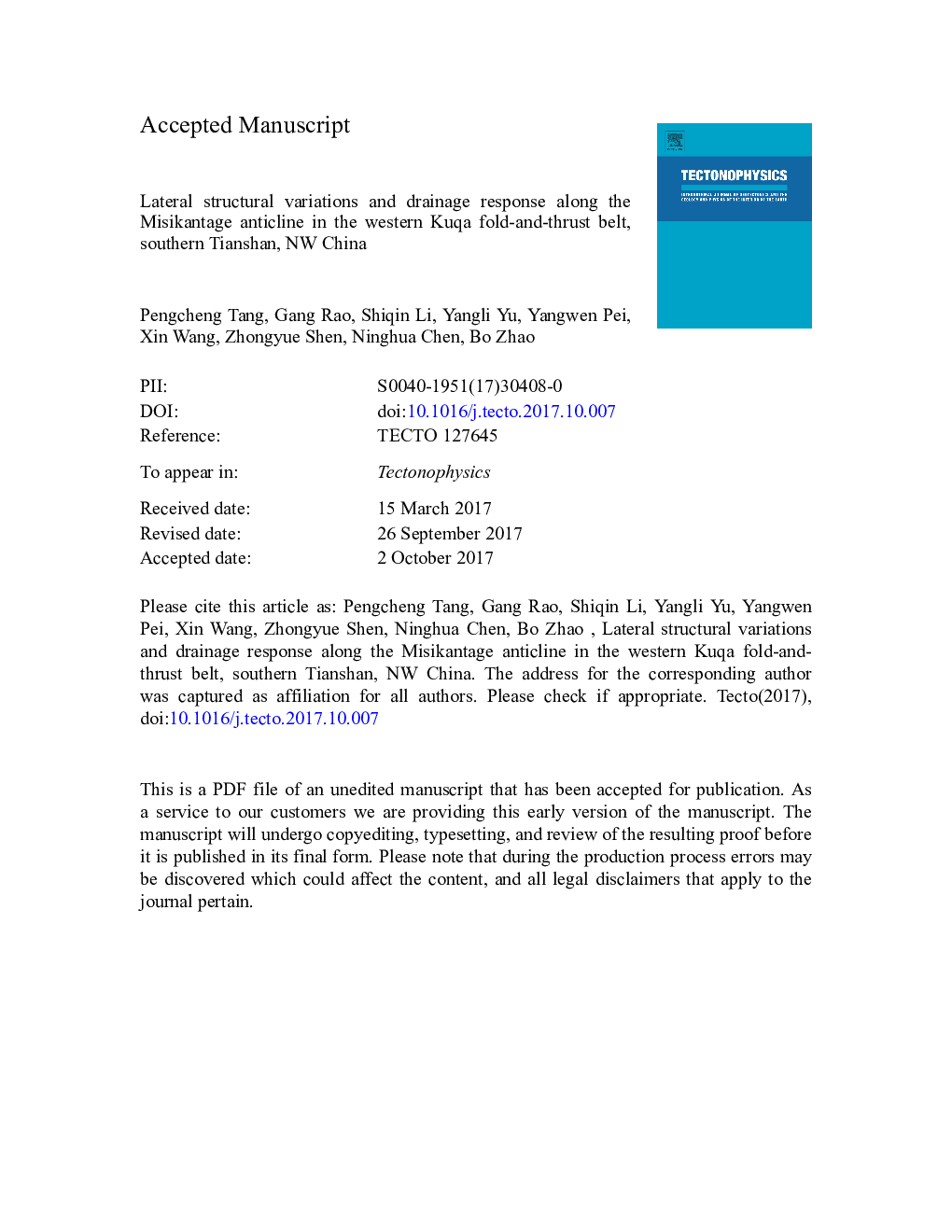| Article ID | Journal | Published Year | Pages | File Type |
|---|---|---|---|---|
| 5781447 | Tectonophysics | 2017 | 47 Pages |
Abstract
The Cenozoic Kuqa fold-and-thrust belt (KFTB) along the southern piedmont of the Tianshan Mountains (NW China) provides excellent chances for investigating active deformation and its controls on landscape topography. In contrast to the well-imaged eastern KFTB, the structural deformation in the western part complicated by the development of early-stage salt structures still has not been well investigated. On the basis of seismic reflection profiles, well data and surface geology, combined with previously determined paleomagnetic ages, this study focuses on the deformation style, onset and average shortening rate of the Misikantage anticline in the western KFTB. Together with the morphometric analysis of satellite images and digital elevation models (DEMs), we have demonstrated that: 1) the Misikantage anticline is an asymmetric detachment fold, where the fold geometry, amounts of shortening, outcropping strata and channel network patterns vary along strike; 2) syntectonic growth strata recognized from seismic profiles combined with paleomagnetic ages indicate that the folding started at ~2.4Â Ma and resulted in ~0.3-0.9Â km of shortening, yielding an average shortening rate of ~0.12-0.38Â mm/yr; 3) the landscape topography and drainage networks markedly change in response to lateral structural variations. These findings would provide a basis for further comparisons of compressional structures between the eastern and western KFTB, which are also helpful in better understanding active folding in fold-and-thrust belts particularly where thick salt is involved in deformation.
Keywords
Related Topics
Physical Sciences and Engineering
Earth and Planetary Sciences
Earth-Surface Processes
Authors
Pengcheng Tang, Gang Rao, Shiqin Li, Yangli Yu, Yangwen Pei, Xin Wang, Zhongyue Shen, Ninghua Chen, Bo Zhao,
